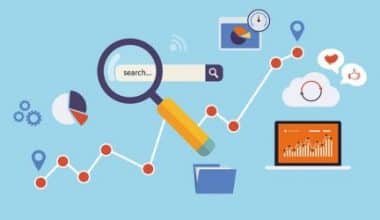Did you know that cash is one of the least preferred forms of payment with only 20% of consumers using it?
The kind of credit card machine you use to accept payments can therefore have a significant impact on your business, even though it may not seem like much.
A sluggish and ineffective one can give your customers a bad checkout experience, but a contemporary and capable one enables you to better serve customers and even streamline payments and reporting in your company.
Furthermore, the functionality of modern credit card machines ranges from basic credit card processing features to fully-featured POS system functionality.
Therefore, you must select a credit card machine that is in line with your company’s requirements if you want to get the most out of your payment processing.
In this article, we’ll examine credit card machines in detail and discuss the types and prices when selecting one for your company. Let’s get going.
What is a Card Machine?
A card machine, also known as a point of sale (POS) terminal, is a machine that accepts payments from customers.
- A card machine is a machine used to process and complete transactions like sales and withdrawals by reading credit and debit cards.
- Card machines are a class of hardware that has technology integrated into it that enables it to gather the information required from a payment card to accept payments or disburse cash funds.
- Furthermore, card machines are a general term for terminals that are necessary for transactions where card payment is made, but it can refer to any type of device that accepts credit or debit cards.
- Additionally, the majority of the time, card machines are wired into an electrical outlet and communicate with a bank or credit card processor over a phone line or the internet.
So the customer’s credit or debit card just needs to be swiped through the card reader, which reads the data from the magnetic stripe and processes the payment.
The processor then confirms that the account is legitimate and that there are enough funds available after receiving this information from the terminal.
Lastly, the funds are transferred from the customer’s account to the merchant’s account as soon as the transaction is approved, and a receipt is printed.
What Does a Card Machine Do?
We now understand what they are and their purpose, but how exactly do they operate?
#1. Enter the payment amount.
You, the merchant, must first enter the transaction amount into your card reader to begin the process.
#2. The client inserts or swipes their card.
If your customers like the price, they’ll either do one of two things.
* They will simply tap their card on your machine to make contactless payments,
* while for chip and PIN transactions, they will insert their card into the device and enter their digits.
#3. The chip and the device communicate.
The clever part now is that the card’s chip communicates with your machine, which then sends transaction data in an encrypted format to your merchant account.
After receiving the data, the acquiring bank sends an authorization request to the credit card company, which then contacts the customer’s bank to request authorization.
#5. Completed verification checks
The card issuer will confirm the card information is accurate before sending the authorization request to the customer’s bank, which will then verify there are enough funds or credit left on the account.
#6. Payment is successful.
Finally, your card machine will alert you that the transaction was successful if everything went according to plan up until this point and the payment had been authorized.
At this point, you can send your customers on their way.
Types of Card Machines
The following are the types of card machines:
#1. Mobile card readers (wireless)
Mobile card readers allow merchants to accept payments while on the go, and are commonly used by taxi drivers, delivery couriers, and tradespeople.
#2. Portable card readers
Portable card readers are mobile and can be used on the move, connecting to the Internet via a data SIM or Wi-Fi.
#3. Virtual card readers
Virtual terminals are developed to help merchants accept payments via phone or email, requiring an active Internet connection.
#4. Countertop or tabletop card machines
Countertop card readers are static/stationary devices that require customers to approach them to make payments.
#5. SoftPOS apps
SoftPOS solutions allow businesses to use mobile phones as payment terminals or card readers, making it easy for professionals on the go, seasonal markets, food trucks, freelancers, and more.
Can I Buy my Own Card Machine?
Yes, you can buy your card machine.
Purchasing your card machine has benefits and drawbacks. The fact that the device is yours once you have paid for it is one of the main benefits.
In addition to payment transactions, there are no ongoing fees. You are not required to repair or replace the device if it has minor wear and tear-related scratches or dents as long as it is still functional and usable.
It also makes it simpler to switch merchant service providers, which is an advantage. Every time a merchant service provider has a promotion running or an introductory rate available, you can switch and save and benefit from the savings that can be had.
A machine purchase has drawbacks as well. Cost is the first.
When starting a new business, purchasing a card machine, especially a contactless reader, can be expensive.
Therefore, the cost of a replacement device is then incurred if you lose or damage the first. You’ll have to pay to repair or replace it if it malfunctions.
Additionally, future-proofing is another drawback. Your card reader might be operational now, but eventually, it will be rendered obsolete. At this point, you would either need to purchase a replacement or use one with fewer features until you have the money to do so.
How Much is a Credit Card Machine?
The least expensive card readers are app-based card readers, also known as mPOS machines because they require a connection with a smartphone or tablet to function.
Zettle, SumUp, and Square provide payment facilitators with transaction fees and add-on services to reduce start-up costs.
mPOS card readers typically cost between £15 and £30, excluding VAT. Both shipping and account creation are free.
The most preferred choices are as follows:
Some payment processors may provide standalone card machines that operate wirelessly over WiFi, 4G, 3G, or GPRS. The cost of these independent card readers ranges from $100 to $200, excluding VAT. Because they operate without a mobile app, they are more expensive than mPOS readers.
Therefore, the terminal frequently includes a built-in, free SIM card with data if mobile connectivity is a feature.
But if you want a traditional card machine made by Verifone or Ingenico, they cost between £200 and £800, if you’re lucky enough to find them for sale.
These commonplace card readers can be pricey to repair or replace unless you have a warranty. You would also need to pay ongoing transaction fees and a card processing contract to even be able to use them.
Finally, it is important to note that small businesses don’t buy terminals, instead renting or leasing them to accept and process card payments.
Advantages of using a Card Machine
- Improved security
Card readers are designed to protect payment information and prevent fraud.
- Quicker payments
Card readers help streamline payments and serve more customers during peak times.
- Increased sales and profits
Customers are more likely to spend more when paying by card than cash.
- Reduce the risks of fraud.
Card payments reduce the risk of human error, theft, and cash deposit operations.
- Offers a better customer experience
Card readers reduce the hassle of shopping and increase customer satisfaction.
- Improved credibility
Businesses should offer a variety of payment methods to increase customer trust.
- Keep records easily.
Having a merchant account makes it easy to track transactions and manage books.
- Offers better business insight
Track card reader sales to manage stock control and staffing.
- It offers you a competitive Edge
Businesses need to be up to date with card readers to gain an edge over competitors.
- It allows for flexible solutions
Card processing fees can be avoided with affordable card machine options.
What are the Two Types of Payment Cards?
There are card types to be aware of when using payment cards to buy or sell goods or services:
#1. Credit cards:
- This allows the cardholder to make purchases up to a predetermined credit limit
- It provides the account holder with a grace period during which they can pay no interest;
- Furthermore, it requires them to make at least the minimum payment each month.
#2. Debit cards:
- These cards are issued in conjunction with a bank.
- They only allow the cardholder to withdraw funds from that account and any available overdraft.
Apart from those popular two payments cards, we have other types of payments cards like:
#3. Charge cards:
- These may charge an annual fee or grant the cardholder a line of credit, but this must be paid off in full each month to avoid additional fees.
#4. Prepaid cards:
- Because they are available in different currencies and can be provided pre-loaded, they can be used as an alternative to business travel cards.
- They typically come with a variety of charges
#5. Business travel cards:
- They operate similarly to other business credit or charge cards and can be a convenient way for employees to pay for business travel expenses.
- They frequently come with extra perks, like travel insurance or currency exchange services.
#6. Purchasing cards:
- They are typically only available to buyers who work for large companies or government agencies.
- Additionally, they are made to reduce paperwork and the need for purchase orders.
How Much Does a Credit Card Machine Cost Per month?
In an interchange-plus scenario, a flat monthly fee and a fee per transaction are added to the interchange and assessment fees.
The cost per month could be between $9.95 and $20.
In conclusion, installing and maintaining card machines is more advantageous than not.
There are many myths about card machines that may make you hesitant to invest in this method of payment, but the truth is that there is no truth to them.
Finally, card machines are what customers want and If you haven’t already, it’s time to keep up with the competition and purchase credit card machines for your business.
How to Consolidate Credit Card Debt Without Hurting Your Credit (Updated!)
BEST CREDIT CARDS FOR BEGINNERS 2023 (Updated)
WHAT IS A POS TERMINAL: Definition, Types, Prices & Guide
PSYCHOLOGICAL HARASSMENT: Definition, Examples, Lawsuit & Guide






